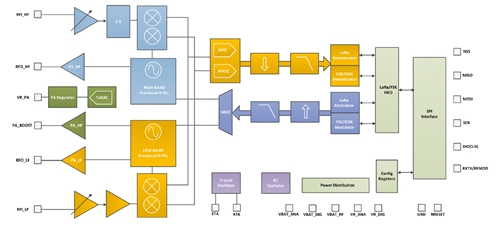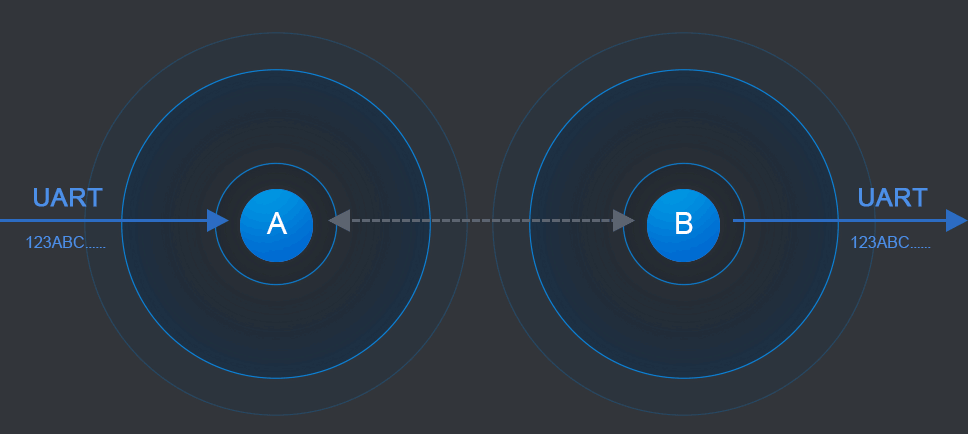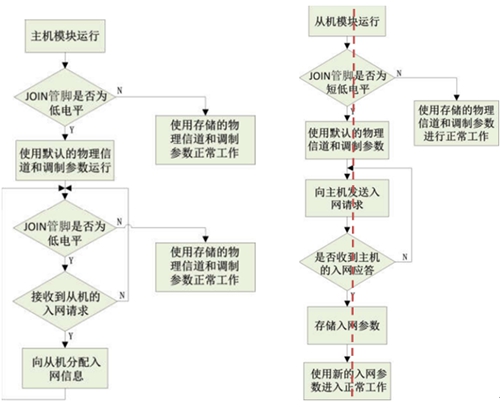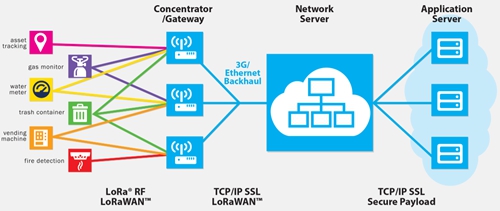As a low-power wide area network communication technology, LoRa achieves both the long-distance and low-power consumption requirements of the Internet of Things, and makes more and more applications to LoRa technology. In the face of numerous node networking requirements in the network, how to quickly and easily implement networking?
First of all, let's find out what is LoRa.
LoRa is an ultra-long-distance wireless transmission scheme based on spread spectrum technology. It belongs to one of the Internet of Things communication technologies. Its name is derived from the abbreviation of "Long Range." It can be seen from the name. Its big feature is far. Distance transmission.

According to investigations, the spread spectrum communication technology was invented in Hollywood in 1944 by the 26-year-old Hollywood actress Hedy Lamarr (known as the beautiful woman in the world) and inspired by the principle of the musician George Antel playing the piano synchronously. Frequency hopping technology can effectively resist interference and achieve encryption.

Figure 2 Mother of CDMA - Hedy Lamarr
As shown in the schematic diagram of the spread spectrum modulation, the original signal of the user data is XORed with the extended coded bit stream to generate a transmitted signal stream. The effect of this modulation is that the bandwidth of the transmitted signal is significantly increased (expanded Spectrum).

Figure 3 Schematic diagram of spread spectrum modulation
Of course, spread spectrum technology is not perfect, it has at least two drawbacks:
l Spreading coded modulation to generate more slices of data stream results in a decrease in the communication data rate;
l More complex modulation and demodulation mechanisms.
In August 2013, Semtech of the US issued a new type of chip based on ultra-long-distance low-power data transmission technology below 1GHz to the industry, which is what we call LoRa chip.

SX127X series LoRa chip can be seen in the module block diagram of Fig. 2. In addition to the spread spectrum modulation method, the module also supports other multiple standard modulation methods such as FSK/GFSK, and they can be switched to each other, combining them to achieve long-distance modulation capability. Use standard FSK or OOK modulation techniques.
Once launched, LoRa won wide attention with its amazing sensitivity (-148dBm), strong anti-jamming capability, and outstanding system capacity.

Figure 1 SX127X functional block diagram
In the face of LoRa's complex modulation and demodulation mechanism, many engineers cannot start. To solve the user's troubles in debugging the underlying LoRa protocol stack, ZLG Zhiyuan Electronics has designed and developed an industrial-grade LoRa networking transparent transmission module, LM400T, to assist users. Rapidly develop products and seize market opportunities.
The transparent transmission protocol inside the module is as if an invisible transmission line is built between the modules. Users do not need to understand complex wireless transmission protocols to quickly implement network construction, which greatly reduces the cost of project installation and the complexity of construction.

In addition to the functions of network access, network exit, channel division, node management, and white list, the LoRa networking transparent transmission module simplifies the networking process to one-click operation, making it easier for users to configure the network.

The module's ad hoc network function is a master-slave star network topology. The user first sets the module as the corresponding master and slave module and starts the ad hoc network function. Then the user only needs to pass the module JOIN pin and DETECT. With pin control, network networking modules can be quickly networked.
In the ad hoc network mode, the host module automatically selects the physical channel and modulation parameters that are not used around to form a separate network, and can automatically assign a local network address to the slave module. The slave module uses When the ad hoc network function is enabled, no configuration operation is required. The slave module can communicate with the host after joining the network. A host module* can connect up to 200 slave modules.

Figure 2 Network diagram of the master module and slave module
Then, it can trace back to the slave information stored in the host network through command inquiry to facilitate management and communication, and it truly gets rid of the LoRa gateway coordinator.
The following figure shows the overall solution of LoRa applications. At present, LoRa is playing a major role in the development of the industrial Internet with long-distance, low power consumption, and anti-jamming.

brass fittings according to EN1254,the material is DZR602 and 754S,brass fittings,brass plumbing fittings,brass pipe fittings,connex brass fittings,yorkshire brass fittings,pegler brass fittings
brass fittings,brass plumbing fittings,brass pipe fittings,connex brass fittings,yorkshire brass fittings,pegler brass fittings
Taizhou Runde Company , https://www.zjbrassfittings.com